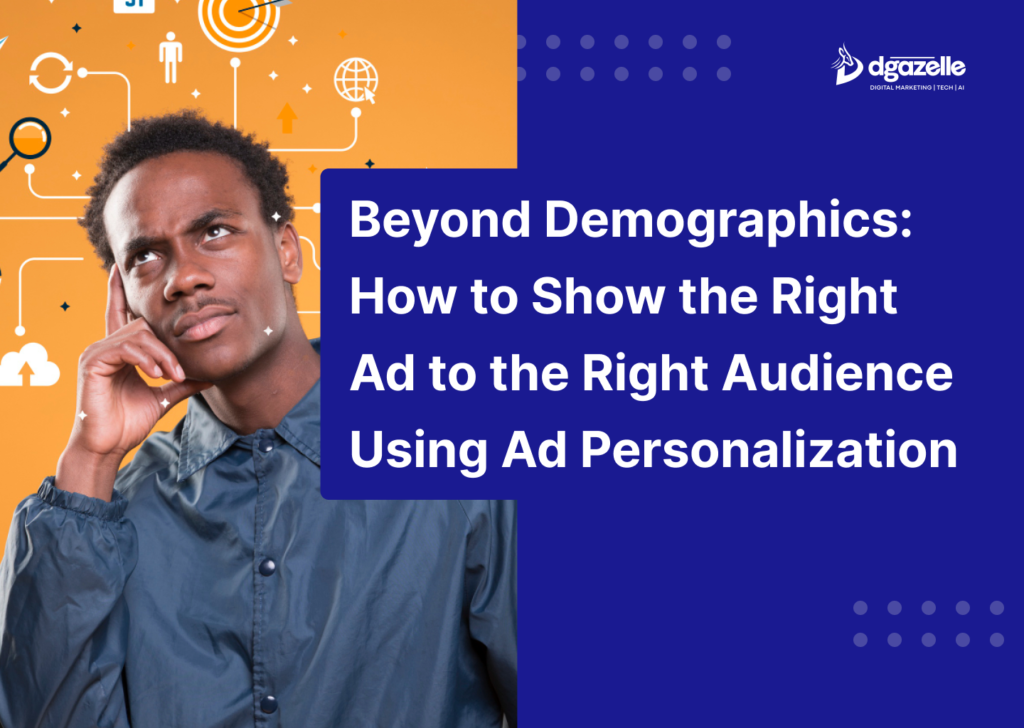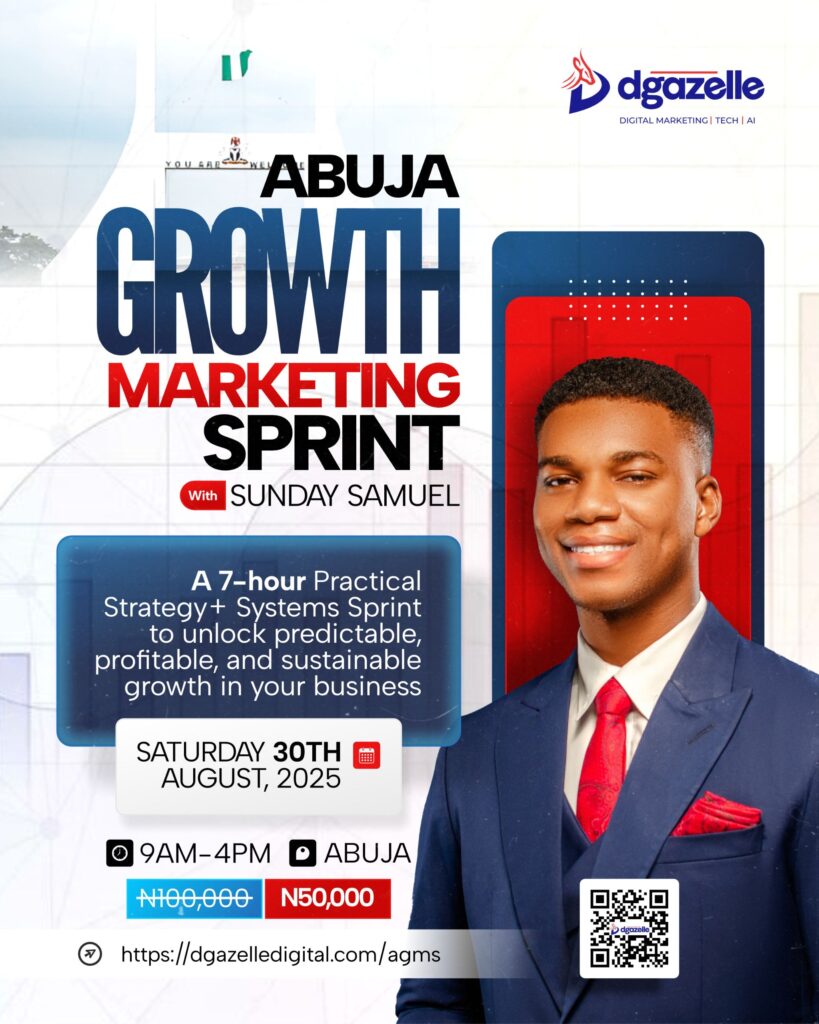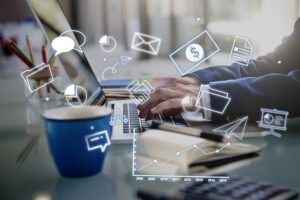Did you know that 80% of consumers are more likely to buy from brands that offer personalized experiences? With the way things are going in the advertising space, generic ads just don’t cut it anymore. If your paid media campaigns aren’t speaking directly to your ideal customer, you’re leaving money on the table.
Ad personalization helps businesses move beyond basic demographics, using data to predict a viewer’s interests and intent. Instead of showing the same static ad to everyone, you can tailor your campaigns based on factors like geolocation, browsing behavior, and purchase history. For example, instead of serving generic fashion ads, a Nigerian clothing brand can display styles based on what a customer recently searched for or viewed.
But with privacy concerns on the rise, how do you find the right balance? In this guide, we’ll explore how to personalize ads effectively while staying compliant and ensuring your audience feels valued, not stalked. You’ll also discover how businesses—just like yours—can increase engagement, improve ad performance, and reduce wasted ad spend with strategic personalization.
Let’s dive in.
What Is Ad Personalization?
Ad personalization is the strategy of aligning your campaigns with your audience’s preferences, behaviors, and demographics. Instead of serving the same generic message to everyone, personalized ads deliver content tailored to each individual, increasing relevance and engagement.
For example, a Google ad for a Nigerian fashion brand might say, “Find the latest Ankara styles near you,” while a social media ad could highlight a discount on outfits recently viewed by the user.
Platforms like Google Ads and Facebook Ads Manager make personalization easy by dynamically adjusting ad components. A Nigerian travel agency, for instance, can showcase flight deals to Dubai for users who previously searched for visa assistance.
Types of Ad Personalization
1. Demographic Personalization
This approach targets users based on age, gender, income, or education. It’s useful when you have a clear understanding of your audience’s profile.
Example: A Nigerian fintech startup offering business loans could target small business owners aged 25-45 with an ad like “Get up to ₦5 million in funding—fast and easy!”
2. Behavioral Personalization
This method relies on user activity—browsing history, purchase behavior, and interactions with past ads.
Example: A user who visits a Lagos-based fashion eCommerce store but doesn’t buy anything might later see an Instagram ad featuring the exact shoes they browsed, with a special discount to encourage purchase.
3. Context-Based Personalization
These ads adapt based on location, time, or weather to stay relevant to users in real time.
Example: A ride-hailing app in Nigeria might display an ad saying “Stuck in Lagos traffic? Get a ride in minutes!” during rush hour.
4. Predictive Personalization
AI and data analytics predict what users might need based on past behavior.
Example: A skincare brand could show an ad for sunscreen to customers who frequently buy skincare products, anticipating their needs before summer.
5. Retargeting Personalization
Retargeting helps businesses re-engage users who visited their website but didn’t convert.
Example: A Nigerian electronics store could show a “Still thinking about it? Get free shipping on your laptop today!” ad to users who abandoned their cart.
Let Dgazelle craft data-driven digital marketing strategies that drive real results. Get Started Today!
6. Device-Based Personalization
Ads are optimized based on whether the user is on mobile, tablet, or desktop, ensuring the best experience.
Example: A travel agency could promote “Mobile-only flight deals” to users browsing on their phones.
When businesses in Nigeria leverage these ad personalization strategies, they maximize engagement and conversion rates. Whether you’re selling fashion, fintech services, or real estate, speaking directly to your audience makes all the difference.
The Benefits of Ad Personalization
1. Higher Click-Through and Conversion Rates
Personalized ads speak directly to individual needs, making them more engaging. When users see content that aligns with their interests, they’re more likely to click and take action.
Example: A Nigerian real estate firm targeting diaspora investors could show ads highlighting properties in their preferred locations, increasing the chances of a sale.
2. Lower Cost Per Acquisition (CPA)
More relevant ads mean better engagement, leading to reduced ad spend per customer acquisition. Instead of wasting money on broad campaigns, brands can focus on high-intent users.
3. Improved Return on Ad Spend (ROAS)
Tailored messaging leads to better conversion rates, ensuring brands get the most out of every ad dollar spent.
4. Competitive Advantage
A Smart Insights report states that 72% of customers only engage with ads that feel personalized. Businesses that ignore this trend risk falling behind competitors who offer a more tailored experience.
When to Use Ad Personalization
Ad personalization can significantly boost ad performance, but only if used strategically. Here’s how to determine when and how to implement it effectively.
1. You Have Reliable Data & Tracking
Before running personalized ads, ensure you have proper tracking systems in place. Platforms like Google Ads and Meta require tracking pixels to collect user behavior data. Without this, personalization won’t work effectively.
2. Your Audience Size Meets Platform Requirements
Ad platforms have minimum audience size requirements. If your target audience is too small, your ads may not reach enough people to be effective.
3. Your Messaging Feels Relevant—Not Creepy
Personalization should feel helpful, not intrusive. Ads that feel too specific (e.g., mentioning exact past searches in an unnatural way) can make users uncomfortable and lead to distrust.
4. You Have a Well-Designed Campaign Strategy
Once you’ve built your audience, ensure your ad copy and creatives match their preferences. For example, a Nigerian fintech brand targeting small business owners should craft messaging that highlights financial solutions tailored to SMEs.
Personalization Trends to Watch for in 2025
As technology evolves, so do consumer expectations. In 2025, ad personalization will be more advanced, interactive, and privacy-conscious. Here’s what business owners in Nigeria should keep an eye on:
1. Hyper-Personalization with AI
Brands will use AI to deliver ultra-personalized ads based on real-time behavior. Imagine an e-commerce store showing customized fashion recommendations based on previous searches and social media engagement.
Reach the right audience with targeted campaigns that convert. Book a Free Consultation!
2. Predictive Personalization
AI-driven tools will anticipate customer needs. For example, a fintech app could suggest savings plans based on a user’s transaction history, improving engagement and conversion rates.
3. Augmented Reality (AR) & Virtual Reality (VR) Ads
Brands will create immersive experiences using AR/VR. A real estate firm could offer virtual property tours, allowing potential buyers to explore homes from their smartphones.
4. Privacy-First Personalization
With stricter data regulations, brands will rely more on first-party data like quizzes, surveys, and loyalty programs to deliver personalized experiences while maintaining trust.
5. Mobile-First Personalization
As Nigerians increasingly rely on mobile devices, brands will leverage behavioral analytics to send personalized notifications, exclusive deals, and geo-targeted promotions.
Conclusion
Personalized advertising is no longer optional—it’s a necessity for brands that want to maximize engagement, conversions, and ROI. By tailoring ads to audience behaviors and preferences, businesses can create meaningful connections that drive sales.
Leveraging tools like Performance Max and Customer Match makes it easier to implement personalization at scale. Start with simple strategies like geotargeting or dynamic landing pages, then refine your approach based on performance insights.
However, personalization must be balanced with transparency and trust. Clearly communicate how customer data is used, ensuring that personalization enhances user experience rather than feeling intrusive.
When done right, ad personalization isn’t just about sales—it’s about delivering value and meeting audience needs in a way that fosters lasting brand loyalty.
Your audience deserves more than generic ads—let’s craft something personal. Start your data-driven campaign today!







